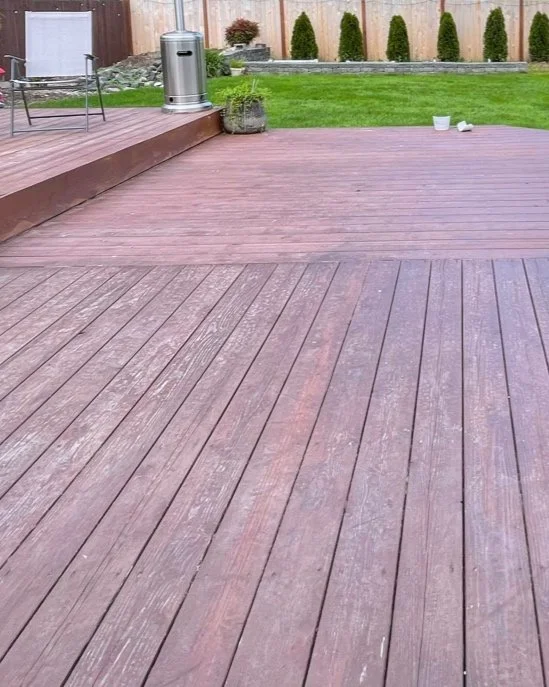What Visual Merchandising Has Taught Me About Interior Design
Current Title: Visual Merchandising Manager for Williams-Sonoma
Wait… what?
If you’re new to my blog and somehow stumbled upon this blog post first, welcome, but you should probably read a few posts back where I share my wicked journey of creating a life I hated and needed to recover from.
The summer months was basically a season of reflection and self-discovery and hard truths for my family and I, but especially for me. One of those hard truths —
Being an entrepreneur was not enough for me.
That’s going to require it’s own dedicated post and that’s so not why we’re here.
I’d always known that should I ever need to go get a job outside of the home, it would likely be in visual merchandising, not interior design. I can’t quite explain it, but I knew that as a designer, I wouldn’t want to do that in the traditional sense of working at a firm, even though I am perfectly fine working within the confines of an organization as a merchandiser — weird, I know, don’t judge me.
Here’s the sitch…
Being a visual merchandiser for the better part of a decade is what empowered me to become an interior designer. I say I’m a self-taught designer and that’s because just about everything I learned, as it related to creating beautiful spaces, I learned from my years of merchandising retail spaces. All of my merchandising skills were easily transferable to an interior design career of my own making; and everything I picked up along the way since pivoting only sharpened those skills.
Playing With Colors and Patterns
In retail — in a perfect world — we get all of our units for a new season at one time and can perfectly place everything on the floor when the. That has never in my entire career happened! So instead, while waiting for missing pieces, I have to make the previous season make sense with the incoming season.
Spoiler: they are almost never intended to be out at the same time so basically never make sense together.
Having this recurring challenge at just about every retailer I’ve merchandised for — Nike, Victoria’s Secret, Armani Exchange, Kate Spade New York — taught me a very valuable lesson about how colors and patterns can come together beautifully even in the most unexpected (or unplanned) ways!
Zoning Off Areas For Flow & Function
Have you every trying to create paths that meet accessibility requirements while also making sure people can efficiently move around to shop? Because I have. Each vignette needed to seamlessly transition into the next, while still allowing consumers to navigate the space. While it may be a different kind of wayfinding — transactional versus comfort — those same principles are applicable in creating a home that serves its residents.
How are you actually moving through the space everyday?
What paths are more intuitive than others?
Placing fixtures and placing furnishings are different applications, but all the same strategies.
Telling Unique Stories
I’ve always said being a merchandiser made me a silent sales person because through the window dressings, mannequin groupings, and vignette stylings I was telling a story and selling a lifestyle. Now imagine me in your home — styling your mantle, curating your gallery wall, space planning your furnishings…all to tell your story and enhance your lifestyle.
In a retail setting, the clients were complete strangers to me and of all different types, with one common denominator — the shop. Through my product presentation I had to speak to them, without actually speaking to them, creating a story that would resonate with them. With home design, I at least get to know the clients, hear their stories, and then translate that into their space.
Creating A Holistic Design
I’ve already told you how sometimes in retail merchandising we’re mixing seasons, allocating areas for certain products, and making sure the space literally flows. All of this has culminated into one crucial lesson — major key alert! — creating a holistic and cohesive design.
To clarify, when I say holistic, I mean as a WHOLE…as in the bigger picture.
It would be really easy to fixate on one zone, one wall, one mannequin cluster, one story; what would happen, however, is that you’d take a step back and have a bunch of awesome parts that don’t look so awesome together. As a merchandiser, I made it a habit to stand in front of my entire shop to take in the entire presentation.
In a home, while I can’t just stand in front of the home and see the sum of all its parts, I can ask questions about adjacent spaces to really ensure there’s a a cohesive design flowing throughout the home, even if I’m not designing the entire home.
Often, when we pivot careers, we feel like we’re starting completely from scratch, ditching all the things of our yesterlives for this new adventure. Truth is, most skills are transferable. I’ve been able to apply so much of what I learned in retail to my the design chapter of my life, even in planning a conference for other designers!
Having kept these skills sharp and at the forefront of basically everything I was doing made transitioning back into merchandising pretty seamless, and garnered a nice new title to boot.
Manager? Who dat!?
And in case you missed it, I’ll be working for Williams-Sonoma. How does someone with a solid background in apparel merchandising swing that? By leveraging transferable skills. Merchandising is merchandising, yes, but I was also able to now take everything I’d learned about the residential design, couple that with my previous experiences in retail, and VOILA!














